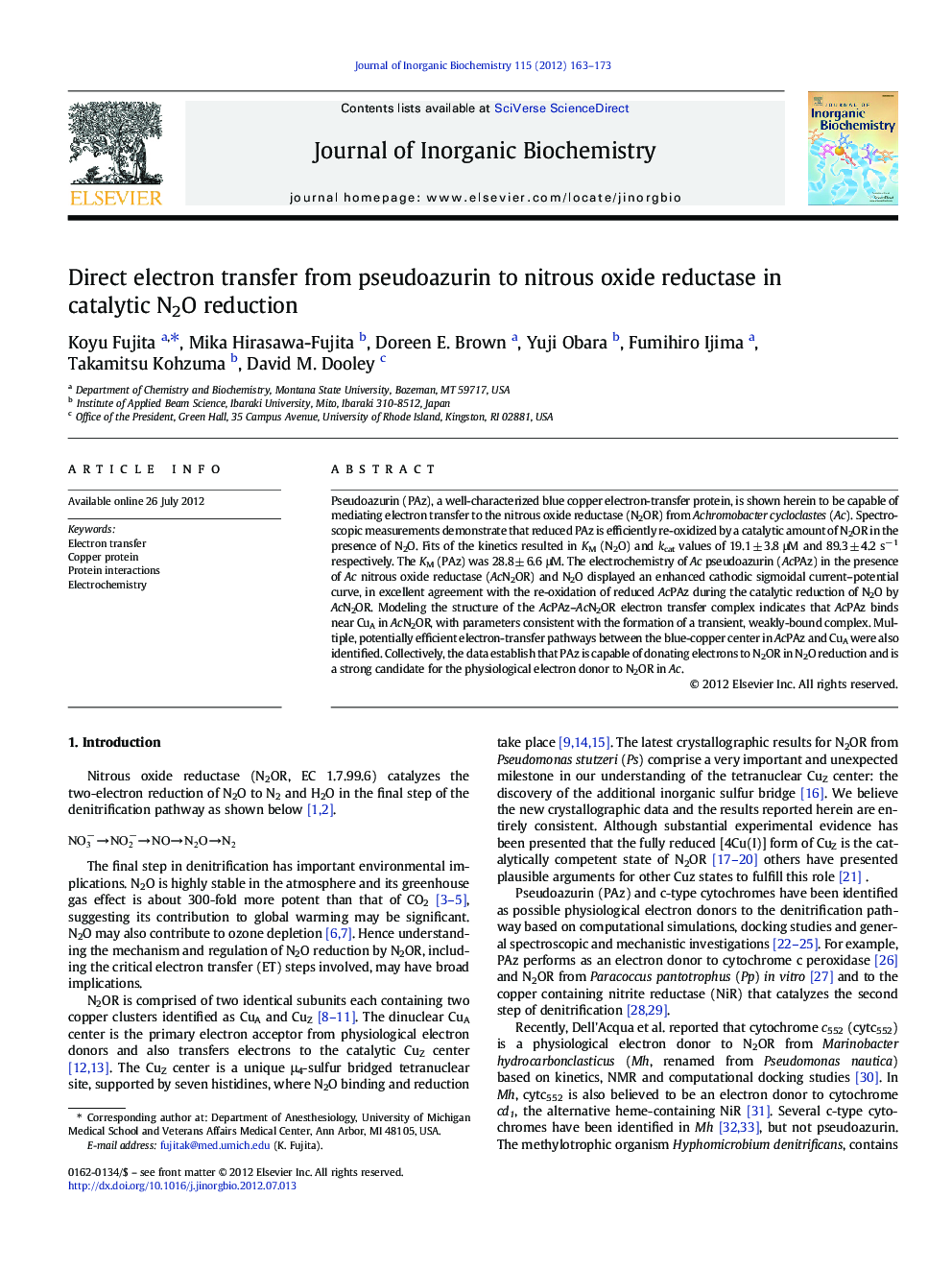| Article ID | Journal | Published Year | Pages | File Type |
|---|---|---|---|---|
| 1316390 | Journal of Inorganic Biochemistry | 2012 | 11 Pages |
Pseudoazurin (PAz), a well-characterized blue copper electron-transfer protein, is shown herein to be capable of mediating electron transfer to the nitrous oxide reductase (N2OR) from Achromobacter cycloclastes (Ac). Spectroscopic measurements demonstrate that reduced PAz is efficiently re-oxidized by a catalytic amount of N2OR in the presence of N2O. Fits of the kinetics resulted in KM (N2O) and kcat values of 19.1 ± 3.8 μM and 89.3 ± 4.2 s− 1 respectively. The KM (PAz) was 28.8 ± 6.6 μM. The electrochemistry of Ac pseudoazurin (AcPAz) in the presence of Ac nitrous oxide reductase (AcN2OR) and N2O displayed an enhanced cathodic sigmoidal current–potential curve, in excellent agreement with the re-oxidation of reduced AcPAz during the catalytic reduction of N2O by AcN2OR. Modeling the structure of the AcPAz–AcN2OR electron transfer complex indicates that AcPAz binds near CuA in AcN2OR, with parameters consistent with the formation of a transient, weakly-bound complex. Multiple, potentially efficient electron-transfer pathways between the blue-copper center in AcPAz and CuA were also identified. Collectively, the data establish that PAz is capable of donating electrons to N2OR in N2O reduction and is a strong candidate for the physiological electron donor to N2OR in Ac.
Graphical abstractSpectroscopic and electrochemical measurements demonstrate that reduced pseudoazurin supports the catalytic reduction of N2O by nitrous oxide reductase from Achromobacter cycloclastes. Protein–protein interaction tests using docking simulation reinforce that pseudoazurin is a good candidate for the physiological electron donor to nitrous oxide reductase.Figure optionsDownload full-size imageDownload as PowerPoint slideHighlights► Pseudoazurin as an efficient electron donor to nitrous oxide reductase ► Spectroscopic and electrochemical measurements in support of catalysis ► Docking simulation reinforces the interaction between two of the proteins. ► Pseudoazurin is a good candidate for the physiological electron donor.
